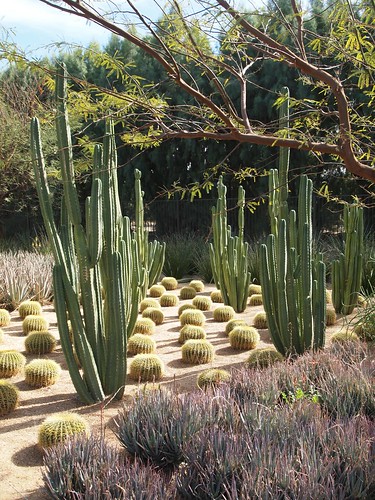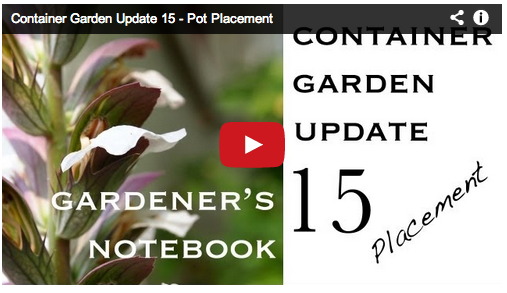
This Garden Vocabulary series seeks to introduce and explain to you — and in many cases, myself — words and terms associated with gardening. Please let me know if there are any terms you would like me to explore. You can leave your ideas in the comments section and we can learn together!
Xeriscaping
“Xeriscaping and xerogardening refer to landscaping and gardening in ways that reduce or eliminate the need for supplemental water from irrigation. It is promoted in regions that do not have easily accessible, plentiful, or reliable supplies of fresh water, and is gaining acceptance in other areas as climate patterns shift. Although xeriscaping may be an alternative to various types of traditional gardening, it is usually promoted as a substitute for Kentucky bluegrass lawns. Kentucky blugrass is commonly used in American suburban landscaping. A cool-season grass, it is well suited to high foot traffic and recreation. However, it is difficult to grow in sandy or compacted soil as well as fast draining sites like slopes, especially those facing the sun. For these reasons, Kentucky bluegrass requires more water use than necessary in arid regions.[1]
The word xeriscaping is a portmanteau of xeros ξήρος (Greek for “dry”) and landscaping, and xeriscape is used for this style of garden. Xeriscaping refers to a method of landscape design that minimizes water use.[2]
Many Denver Water employees helped coin the term xeriscape, and Xeriscape and the xeriscape logo are registered trademarks of Denver Water, the water department of Denver, Colorado.[3]In some areas, terms such as water-conserving landscapes, drought-tolerant landscaping, and smart scaping are used instead. Plants whose natural requirements are appropriate to the local climate are emphasized, and care is taken to avoid losing water to evaporation and run-off. The specific plants used in xeriscaping depend upon the climate.
Xeriscaping is not the same as “zero-scaping” (in which the designed landscape consists mostly of hard surfaces, with a few plants as accent features), and can look quite lush and colorful. Xeriscaping is also different from natural landscaping, because the emphasis in xeriscaping is on selection of plants for water conservation, not necessarily selecting native plants.” — Wikipedia.org
I can find xeriscaping hard and unwelcoming when it is done incorrectly, but the thought of bringing the beauty of our local deserts into the garden appeals to me greatly. My sister lives in the Coachella Valley, a section of low desert containing the cities of Palm Springs, Indian Wells and Palm Desert, among others and I have seen some amazingly good (and amazingly bad) implementations.
For me, the secret seems to be a design that is either highly controlled and manipulated or highly naturalized. it is when the design fall between these 2 extremes that the design fails. Like any garden, too, it is important to plant for the environment you are in rather than the environment you “wish” you lived in.
I recently visited a great example of a xeriscape garden on a recent trip to the Coachella Valley, I visited the Annenberg Estate, Sunnylands and their new visitor center and gardens. This design leans heavily toward this high controlled design and does so to great effect.
Sunnylands Center and Gardens, Rancho Mirage, CA
See more photos and Read my post on Sunnylands
More information on xeriscaping:
- Xeriscaping on Wikipedia
- Xeriscaping at CalRecycle
- Xeriscaping: Creative Landscaping at Colorado State University
Previously on Garden Vocabulary:






